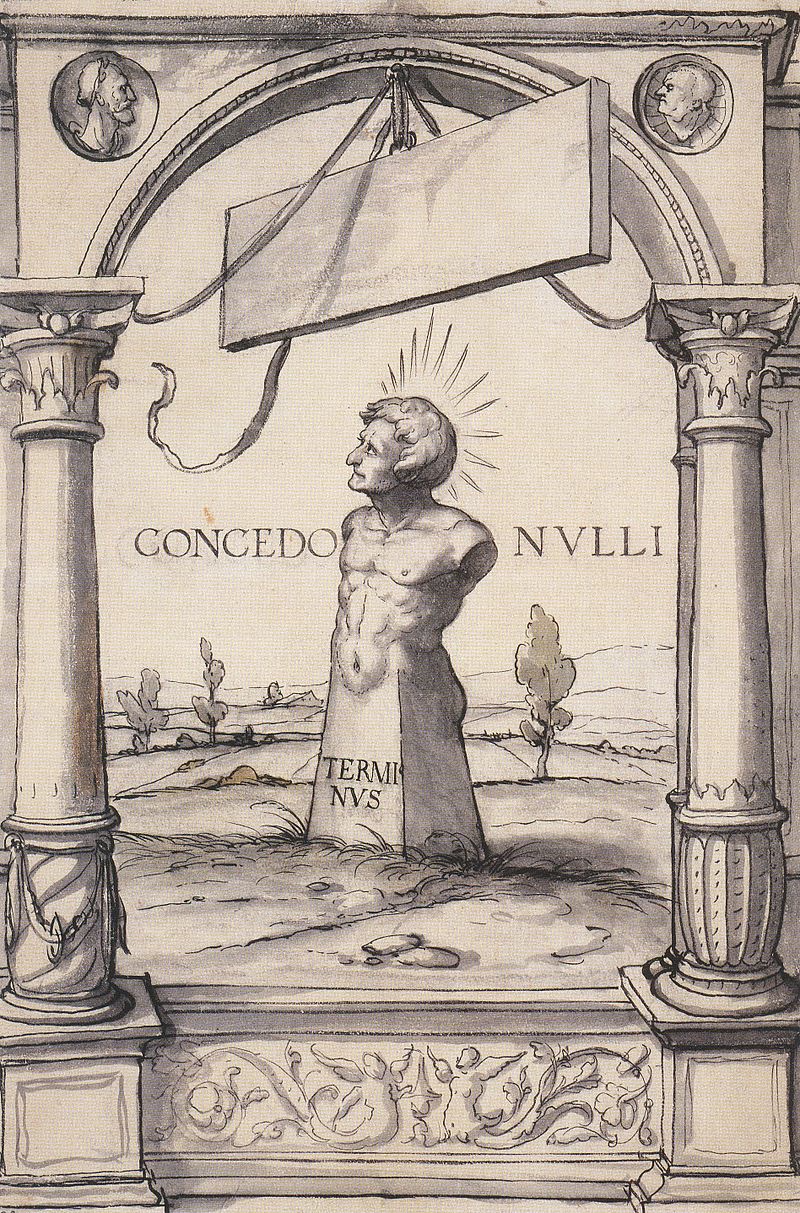Terminus God of Boundaries

by Hans Holbein the Younger
|
The Roman God Terminus was often depicted
as a bust on a boundary stone; the CONCEDO NVLLI
means “yield no ground.” This sacred boundary
stone was a “term” (plural termini), Latin for a
sacred pillar. In ancient Rome moving a boundary
marker was a crime punishable by death.
|
Terminus was a Roman God who resided in and protected boundary markers and frontiers. His veneration was ancient and was said to have been instituted by Numa Pompilius, the legendary second king of Rome, 753–673 bce. Numa ordered that everyone should mark the boundaries of his landed property by stones called “termini” (sacred pillars), singular (term). These termini marked the boundaries of private property as well as the boundaries of the Roman state. The God Terminus himself seems to have no mythology attached to him.
The worship of Terminus, recorded from the late Republic and Empire, was centered around these liminal markers. In Rome and in the country-side, the festival of the Terminalia was celebrated on the February 23. The neighbors on both sides of any termini gathered round the boundary stone, with their wives, children, and servants. The pillar was decorated each on side, with garlands--offering bloodless sacrifices of cakes, meal, fruit, honeycombs, and wine. Then, all the neighbors joined in a general feast. This venerable ritual affirmed the location of the land boundaries for all participants. It was originally unlawful to stain the “termini” stones with blood. Yet, in the grove of Terminus—not far from Rome--a lamb was sacrificed near the ancient border of the town of Laurentum during the Terminalia.
Some historians have speculated this veneration of the termini is an survival of an early animistic reverence for the Numinous spiritual power inherent in the boundary markers.
May 23, 2019 Myth Woodling
Aradia home page
